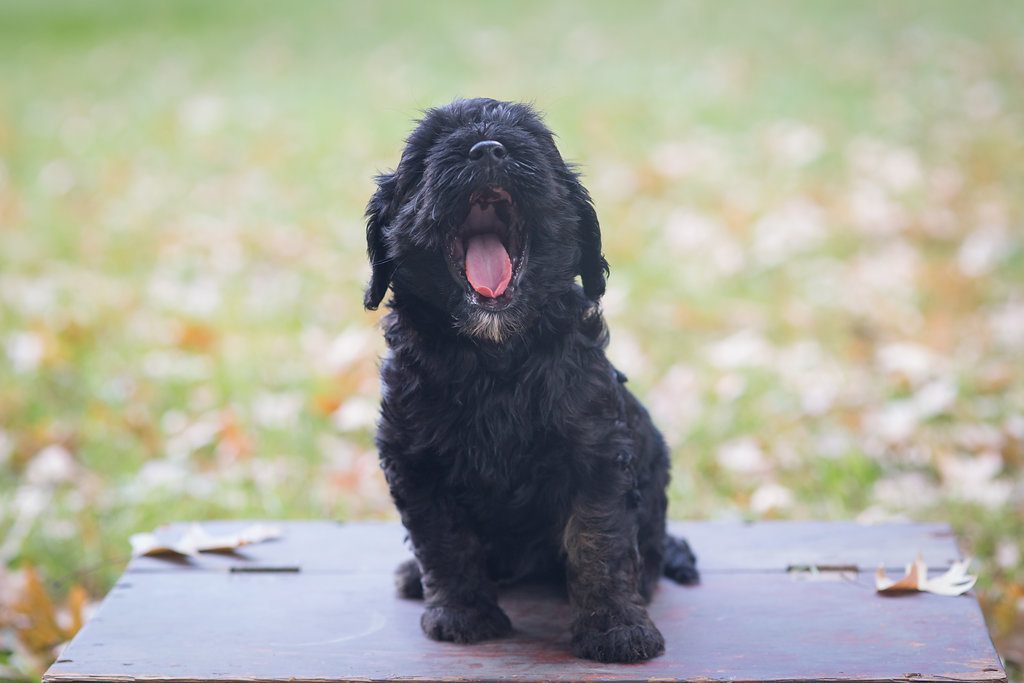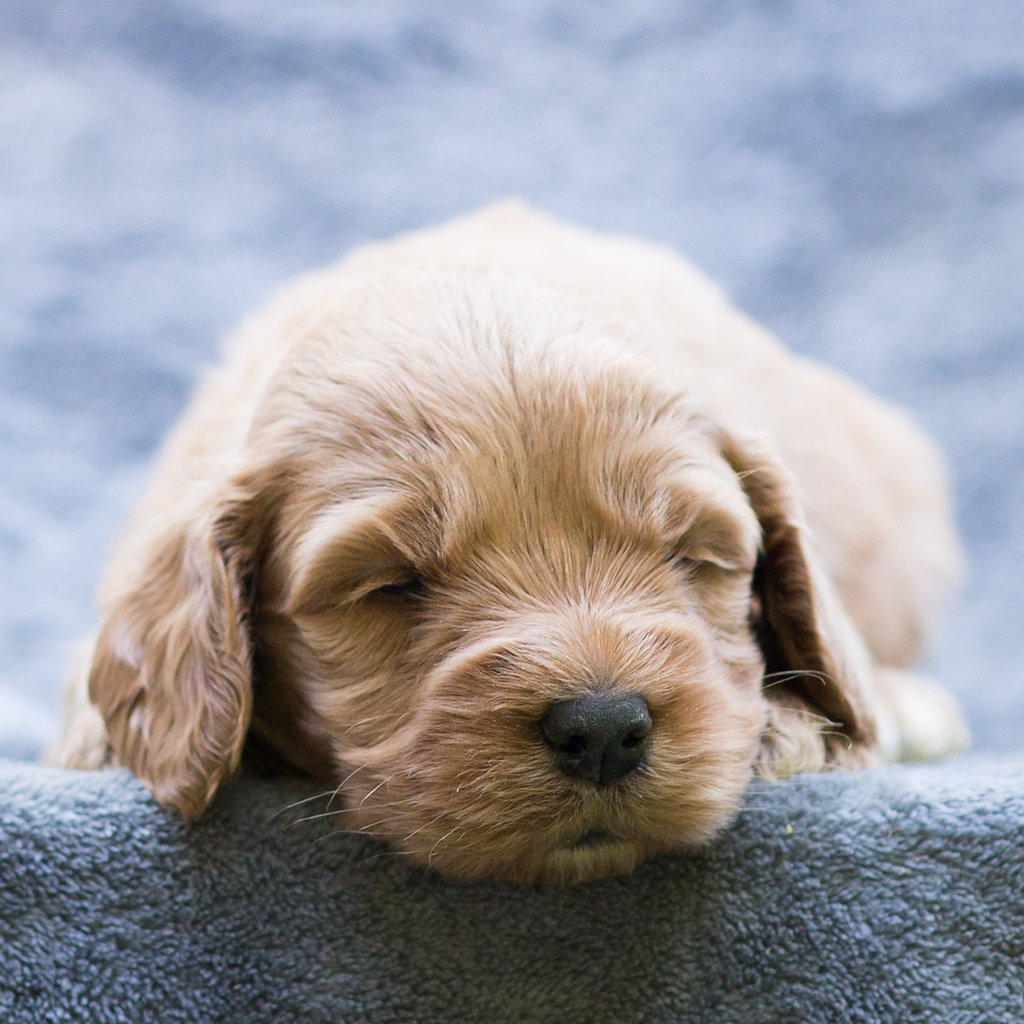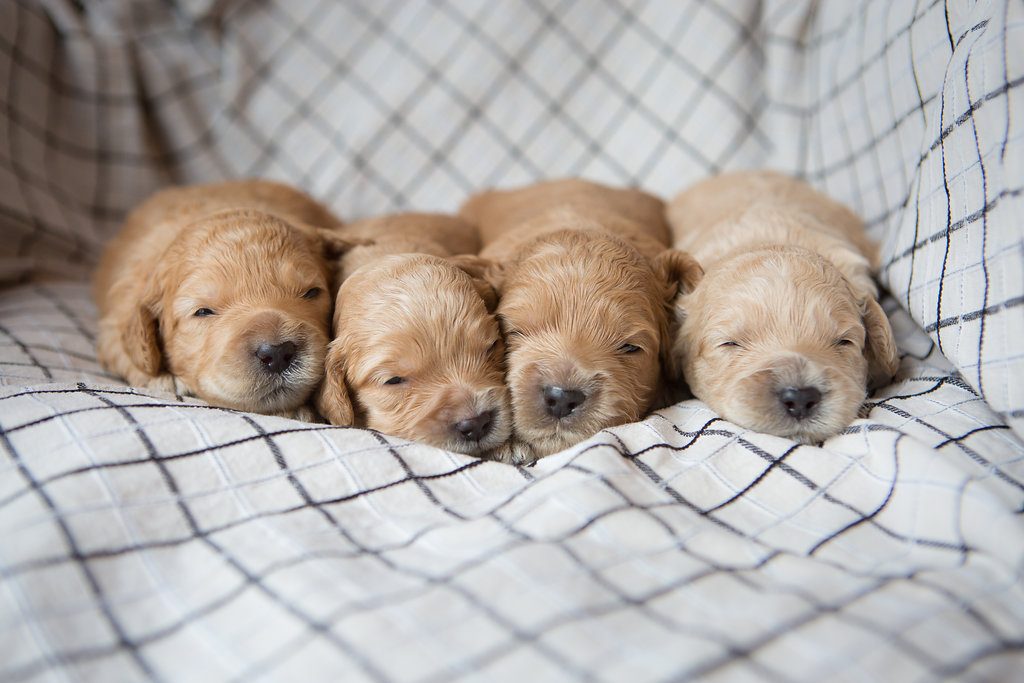
The day you bring your new puppy home is an exciting one! Everyone in the family will be overjoyed to have your new addition in the household. Your puppy will appreciate all the love and care you give them, but will understandably be nervous. Bringing home a new puppy is a lot like bringing home a new baby. That being said, it isn’t uncommon to have a few restless nights as your new puppy adjusts. In today’s blog we are going to talk about puppy sleeping patterns and how you can prepare your puppy for a good night’s sleep in his/her new home.
Determining Where Your Puppy Will Sleep
Each puppy will have his/her own preferences in regards to their favorite place to sleep. We 100% recommend continuing on with your puppy’s crate training until he/she is completely house trained. Puppies thrive off of their connection with humans or other dogs. Allowing your puppy to sleep in his/her crate in your room will give them a sense of comfort throughout the night.

Picking the right place for your puppy to sleep will determine how quickly they transition to their new life. Your small children may want the puppy to sleep in their room. This may not be the best place for your puppy to start. Your puppy might need to go to the bathroom in the middle of the night, so being with an adult who will let them out as needed is best. Your puppy can transition to sleeping with your children once they have adjusted to their new schedule!
Getting Ready for Bedtime
We all have our own bedtime rituals and so should your puppy! Like with young toddlers, your puppy isn’t going to want to go to bed if he/she is excited. It is a good idea to play with your puppy a few hours before bedtime so that they are naturally tired. So head out on a walk or toss around a toy for a little bit to wear your little ball of fluff out.
In order to help with the adjustment process we will send you home with a blanket covered in momma’s scent. Placing this blanket in your puppy’s kennel will help soothe them through the night as they acclimate to their new life. Some people have had success with placing ticking clocks near their puppy’s kennel to mimic the steady rhythm of the mother’s heartbeat. Your new puppy from Archview will have already begun their familiarization with crate-training so their adjustment process should be pretty smooth overall. It isn’t uncommon for your puppy to be concerned the first few nights, however.

Potty Breaks
Most puppies are not going to soil the space they know as their “safe space” or “sleeping spot.” Instead they are going to cry to let you know that they need to go outside! How you handle these potty breaks determine how quickly your puppy will go back to sleep. Don’t treat these trips outside like play time and get your puppy all riled up. Make this trip strictly about one thing: potty time.
Once your puppy has done the deed, reward them with a simple “good boy/girl” and send them back to bed. Keep the lights off in the room, don’t make too much fuss and simply put your puppy back in their crate for the night. The more attention you give your puppy in the middle of the night, the more likely they are to just wake you up seeking that attention.

It is hard to ignore those sweet (and sometimes loud) puppy cries, but that is the best thing to do as they adjust. Some people will lock their puppy away in a separate room, but this will only frighten your puppy even more. Give them time to understand their new routine and they will eventually settle down and go back to bed. Over time, your puppy will be able to hold it longer and longer throughout the night until they don’t need those late night trips outside! Just make sure the first thing you do in the morning is take them back out again to start their day on the right note!







Leave a Reply